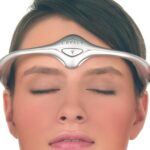 It’s the first device approved to prevent migraine headaches, and the first transcutaneous electrical nerve stimulation (TENS) device specifically authorized for use prior to the onset of pain.
It’s the first device approved to prevent migraine headaches, and the first transcutaneous electrical nerve stimulation (TENS) device specifically authorized for use prior to the onset of pain.
Here’s what we know about Cefaly. Continue reading TENS device FDA-approved for migraine prevention →
 Following a gluten-free diet is the key to treating celiac disease (sprue) — an autoimmune disorder of the small intestine that occurs in genetically predisposed people.
Following a gluten-free diet is the key to treating celiac disease (sprue) — an autoimmune disorder of the small intestine that occurs in genetically predisposed people.
One might think that “gluten free” means no gluten, but that’s not correct, according to the FDA.
Here’s what we now know. Continue reading Defining what it means to be “gluten free” →
 Drs. Andrew Mendelsohn and James Larrick at the Panorama Research Institute and Regenerative Sciences Institute, in Sunnyvale, California, have complied an impressive list of reviews on the effects of exercise. Here’s the first in a series of summaries of their recent publications.
Drs. Andrew Mendelsohn and James Larrick at the Panorama Research Institute and Regenerative Sciences Institute, in Sunnyvale, California, have complied an impressive list of reviews on the effects of exercise. Here’s the first in a series of summaries of their recent publications.
Continue reading Trade-offs: Comparing supplements vs. exercise →
 Cerebral palsy results from injury to or abnormal development of the brain, with various problems in movement, posture, and other behavioral functions.
Cerebral palsy results from injury to or abnormal development of the brain, with various problems in movement, posture, and other behavioral functions.
Researchers at the Graduate School of Education and Ewha Music Rehabilitation Center, in Seoul, Korea, studied the effects of Therapeutic Instrument Music Performance (TIMP) for fine motor exercises in adults with cerebral palsy.
Continue reading Benefits of keyboard playing in people with cerebral palsy →
 The U.S. Food and Drug Administration announced its preliminary determination that partially hydrogenated oils — the primary dietary source of artificial trans fat in processed foods — are not “generally recognized as safe” for use in food.
The U.S. Food and Drug Administration announced its preliminary determination that partially hydrogenated oils — the primary dietary source of artificial trans fat in processed foods — are not “generally recognized as safe” for use in food.
It wasn’t always so.
Continue reading The end of trans fats →
 Hibiscus sabdariffa L. (roselle, red sorrel; Arabic: karkade) grows as large shrubs or small trees that produce huge, colorful, trumpet-shaped flowers promoted to reduce cholesterol levels.
Hibiscus sabdariffa L. (roselle, red sorrel; Arabic: karkade) grows as large shrubs or small trees that produce huge, colorful, trumpet-shaped flowers promoted to reduce cholesterol levels.
Researchers at the University of Malaya, in Kuala Lumpur, reviewed the data on its effectiveness and safety. Continue reading Lack of effect of Hibiscus sabdariffa L. on cholesterol →
 Adulteration of herbal products is common and a threat to consumer safety.
Adulteration of herbal products is common and a threat to consumer safety.
Researchers from Canada and India are the latest to investigate the integrity of herbal products. Continue reading The reality of herbal supplement contamination →
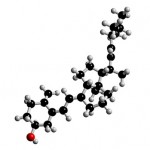 Almost half of older adults take vitamin D with or without calcium.
Almost half of older adults take vitamin D with or without calcium.
Researchers at the University of Tasmania, Hobart, in Australia, reviewed the evidence. Continue reading Review: Vitamin D supplements fail to change bone density →
 Researchers at Tel Aviv University, in Israel, focus on the positive in this small study. Continue reading Cannabis effective in patients with Crohn’s disease? →
Researchers at Tel Aviv University, in Israel, focus on the positive in this small study. Continue reading Cannabis effective in patients with Crohn’s disease? →
 Folklore remedies for pain and inflammation support these bracelets to treat rheumatoid arthritis.
Folklore remedies for pain and inflammation support these bracelets to treat rheumatoid arthritis.
Researchers at The University of York, in the UK studied their effects. Continue reading Static magnets and copper fail to improve arthritis →
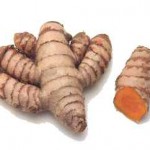 NCB-02 is a standardized curcumin (a chemical in turmeric) preparation that has been used with positive results in an animal model of ulcerative colitis.
NCB-02 is a standardized curcumin (a chemical in turmeric) preparation that has been used with positive results in an animal model of ulcerative colitis.
Now, researchers at the All India Institute of Medical Sciences, in New Delhi, tested it in people. Continue reading NCB-02 to treat ulcerative colitis →
 First lady, Michelle Obama tells us that drinking more water will improve the health of kids and all Americans.
First lady, Michelle Obama tells us that drinking more water will improve the health of kids and all Americans.
Really? Here’s what we know. Continue reading Does water really improve health? →
 Back in the ‘90s there were several reports of serious interactions in people who used Ginkgo biloba with other “blood thinners” to treat peripheral vascular disease (ie, dementia and claudication).
Back in the ‘90s there were several reports of serious interactions in people who used Ginkgo biloba with other “blood thinners” to treat peripheral vascular disease (ie, dementia and claudication).
Researchers at Inje University College of Medicine, in Busan, Republic of Korea, evaluated the effects of G. biloba extracts on the pharmacokinetics of the antiplatelet drug cilostazol (Pletal) and its metabolites. Continue reading Interaction of Ginkgo biloba with antiplatelet drugs →
 People with “tennis elbow” (lateral epicondylitis) experience pain over the outer side of the elbow, which may extend down the forearm.
People with “tennis elbow” (lateral epicondylitis) experience pain over the outer side of the elbow, which may extend down the forearm.
Researchers at Keele University, in Staffordshire, UK, studied the response to TENS (transcutaneous electrical nerve stimulation) added to typical treatment. Continue reading TENS to reduce pain intensity in patients with tennis elbow →
 The ginseng root has been traditionally used as a sedative.
The ginseng root has been traditionally used as a sedative.
Researchers at Kwandong University, in Gangreung, Republic of Korea studied the response to red ginseng extract by human volunteers. Continue reading Effects of red ginseng extract on sleep in healthy volunteers →
 The tanning industry is a thriving, largely unregulated $2 billion industry.
The tanning industry is a thriving, largely unregulated $2 billion industry.
Researchers on The New England Journal of Medicine Journal Watch Dermatology Board reviewed the evidence. Continue reading Use of tanning beds by Caucasian women →
 Alternative explanations are common in about 47% of suspected drug-induced liver injury.
Alternative explanations are common in about 47% of suspected drug-induced liver injury.
Researchers in Germany raised the question of whether a similar frequency might prevail in cases of assumed herb-induced liver injury. Continue reading Profiling and assumed herb-induced liver toxicity →
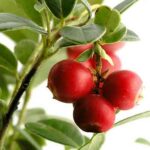 A researcher from Bangalore, India, reviewed the evidence and sees a difference between what’s seen in the lab and what’s reported in practice.
A researcher from Bangalore, India, reviewed the evidence and sees a difference between what’s seen in the lab and what’s reported in practice.
Here’s what we know. Continue reading Is the risk of a cranberry juice and warfarin interaction significant? →
 If campaigns to promote more healthful eating are ineffective, how else might society address the obesity epidemic?
If campaigns to promote more healthful eating are ineffective, how else might society address the obesity epidemic?
MailOnline reports that deportation is an option. Continue reading Too fat to live in New Zealand →
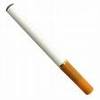 The typical way to stop smoking is to quit abruptly, but some smokers opt to reduce smoking before quitting as an alternative approach to cessation.
The typical way to stop smoking is to quit abruptly, but some smokers opt to reduce smoking before quitting as an alternative approach to cessation.
Researchers from the UK and Vermont reviewed the evidence in this Cochrane review. Continue reading Does it matter how you stop smoking? →
Complementary and Alternative Medicine: Fair, Balanced, and to the Point
 It’s the first device approved to prevent migraine headaches, and the first transcutaneous electrical nerve stimulation (TENS) device specifically authorized for use prior to the onset of pain.
It’s the first device approved to prevent migraine headaches, and the first transcutaneous electrical nerve stimulation (TENS) device specifically authorized for use prior to the onset of pain.


















